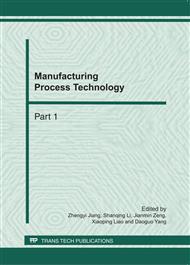p.2058
p.2062
p.2067
p.2071
p.2076
p.2081
p.2087
p.2092
p.2096
Residual Stresses Distribution Calculation of the Cu-Cr-Zr Alloy Contact Wire Used in High-Speed Electrical Railway
Abstract:
According to the strain distribution test data through the rectangle bent beam test, the crack compliance method (CCM) using the Legendre polynomials as the interpolation was employed to measure the residual stresses distribution in the Cu-Cr-Zr alloy contact wire which used in high-speed electrical railway after soluted or soluted-aged-various deformation treatment. The results show that the residual stresses would release, and after soluted-aged-deformation treatment the difference of the residual stresses between the surface and the sub-surface would be dropped into a low level range about 80 MPa from 780 MPa with the same residual stresses distribution direction in the Cu-Cr-Zr alloy contact wire. The Cu-Cr-Zr alloy contact wire prepared process in four steps are as bellow: soluted at 950°C for 1 hour, pre-deformed for 40% ratio, aged at 480°C for 2 hours, and subsequent the second deformed for 75% ratio.
Info:
Periodical:
Pages:
2076-2080
Citation:
Online since:
February 2011
Authors:
Price:
Сopyright:
© 2011 Trans Tech Publications Ltd. All Rights Reserved
Share:
Citation:


